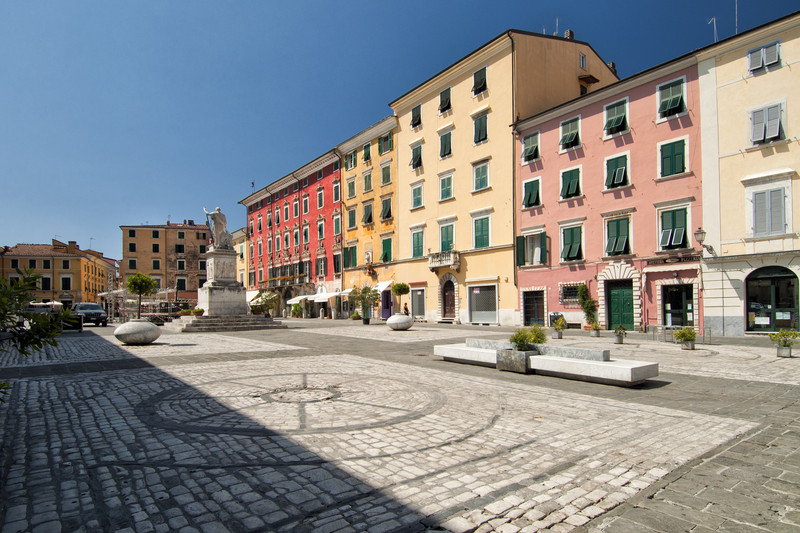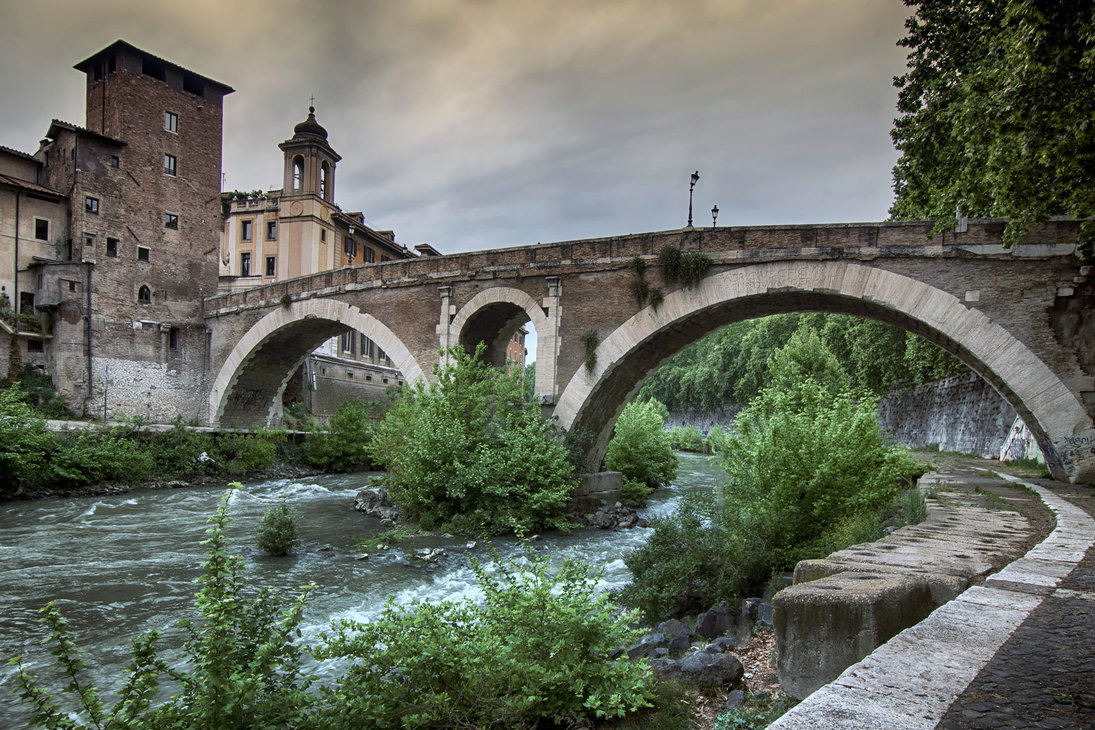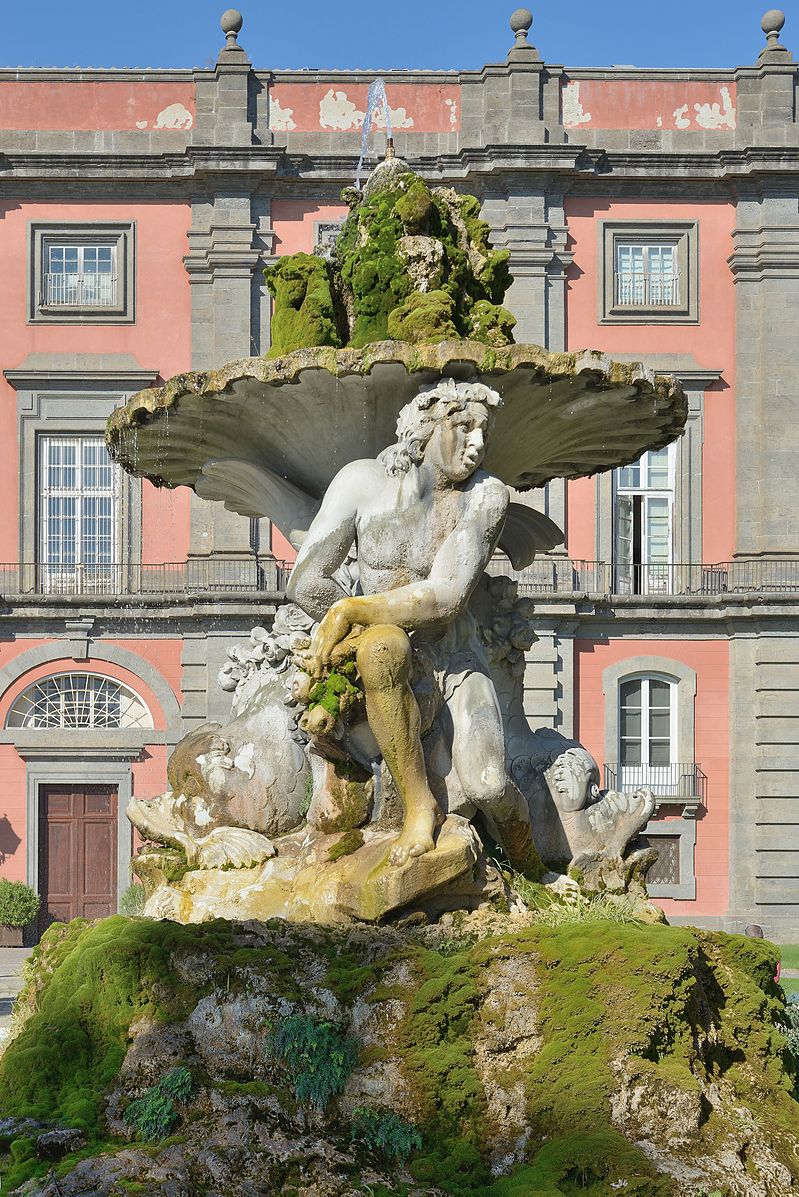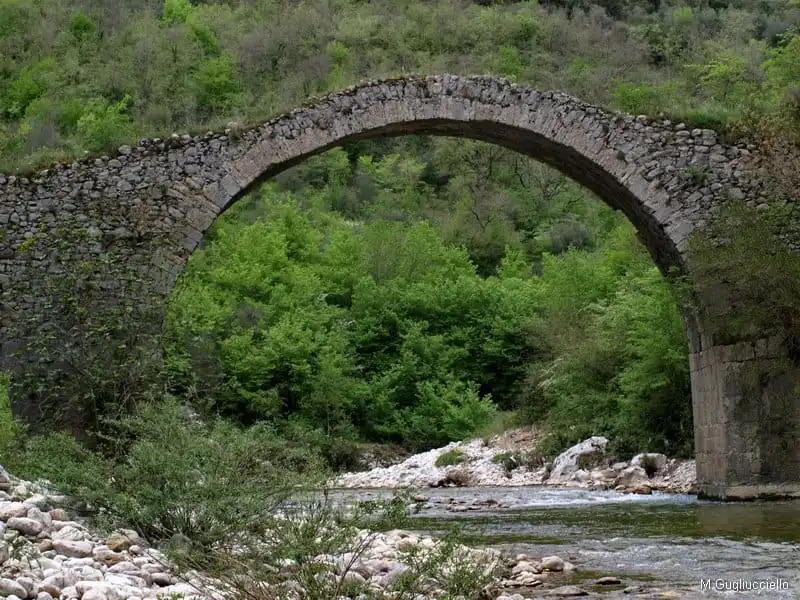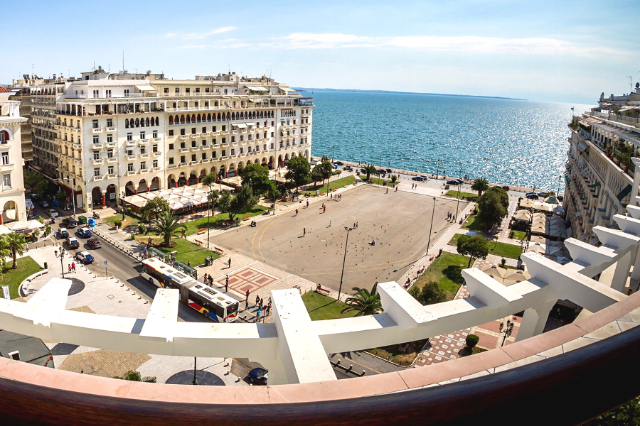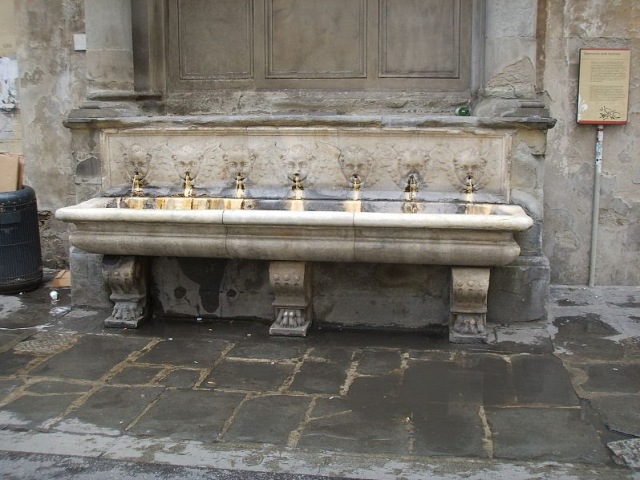The square was once in an uninhabited area and was the ancient platea porco rum, the place where the cattle market took place. It knew a real rebirth at the time of Prince Alberico I Cybo Malaspina, who in 1557 gave impulse to the enlargement. Of the city walls, intended to include the suburbs: with this operation Alberico redesigns the urban structure of Carrara moving here the symbolic and political center of gravity from the area of the cathedral.
The new palaces of the Carrara bourgeoisie overlooked Piazza Alberica: one of the major examples is the sumptuous Palazzo Del Medico, characterized by the bright red of the façade-colour of the powerful visual recall of the Palazzo Ducale in Massa, valuable for the rich sculptural decoration in marble of the corbels and the putti on the window frames.
On the other side stands the Palazzo Diana (called the loggias), built astride the old city walls.
Opposite is the birthplace of the sculptor Pietro Tacca, an illustrious pupil of Gianbologna, author among other works of the famous bronze pig placed in the loggia of the Mercato Nuovo in Florence, one of the symbols of the city.
At the center of the square stands the monument to Maria Beatrice d’Este, Duchess of Massa and Princess of Carrara. The monument realized by Pietro Fontana in 1826, stands on a pedestal adorned with bas-reliefs by artists from Carrara, and is completed by a fountain with a basin and a sphinx, a copy of a subject preserved in the Egyptian collections of the Louvre.
